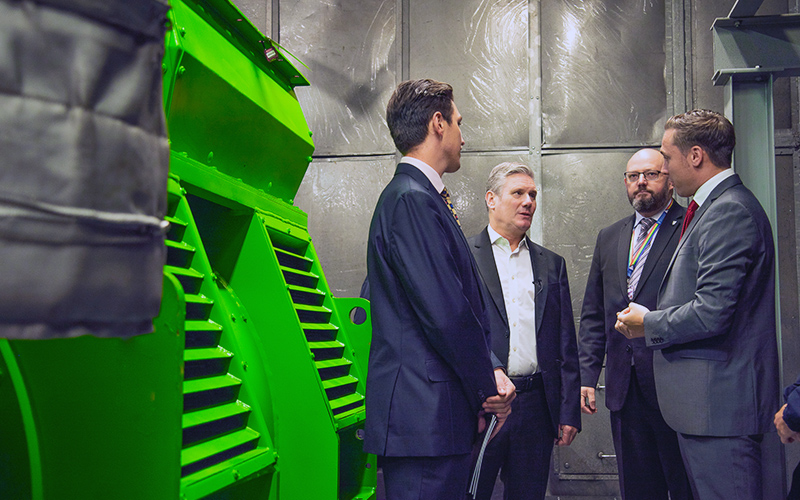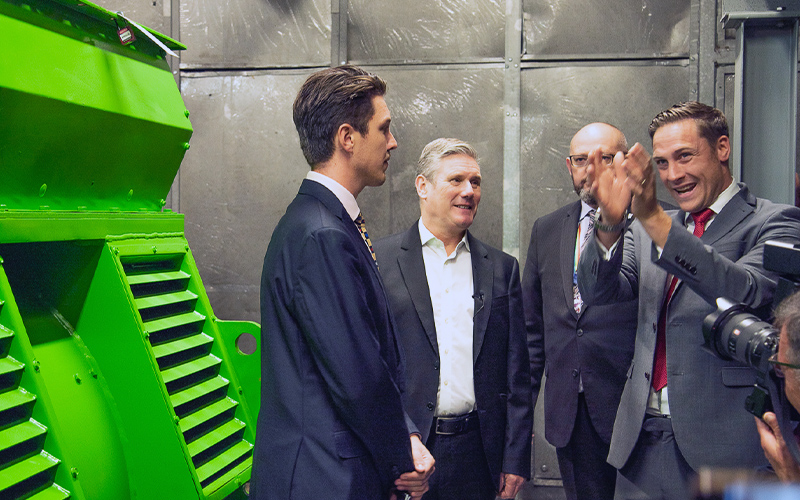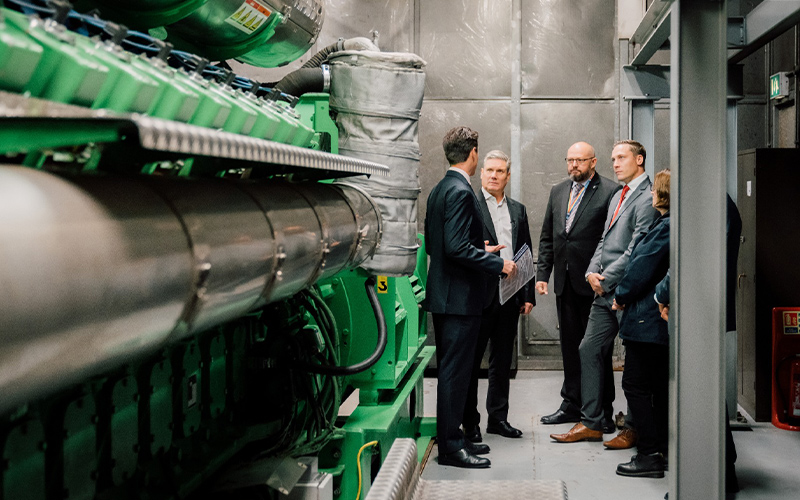Decentralised energy technologies provide a clear route to improving the UK’s energy security and delivering national net zero aspirations, said Keir Starmer during a visit to the University of Liverpool earlier this week.
During the Labour Party Conference, the Leader of the Party visited the Combined Heat and Power (CHP) energy centre that feeds into the university’s heat network, which provides the campus with low-cost, low-carbon heating.
Operated by Clarke Energy, the energy centre generates both heat and electricity through a single, highly efficient process, reducing the university’s gas demand, lowering emissions and saving money on bills. It provides 90% of the campus electricity needs, while the waste heat produced by the CHP process is carried around the campus in insulated pipes to provide a reliable and modern source of warmth to classrooms, lecture halls and accommodation facilities around the estate.

Adam Wray-Summerson with Sir Keir Starmer discussing how CHP remains a key technology in the energy transition
Keir Starmer, Leader of the Labour Party said:
“As the British people face sky rocketing energy bills, we need an energy system that works for the future. That is why this week, I set out Labour’s central mission to turn the UK into a clean energy superpower.
The University of Liverpool’s Energy Centre is a brilliant example of how innovative technology will reduce our country’s carbon footprint through efficient generation of heat and power. To achieve clean power by 2030, innovations like this will be vital. I’m delighted to see the work already done by the University on this, and look forward to seeing further developments in future.”
Clarke Energy’s Head of Sustainable Solutions & Resilience, Adam Wray-Summerson, discussed with Mr Starmer how fuel flexibility and longer-term government policy that supports the development of both biomethane and hydrogen could help ensure that CHP continues to offer benefits in all applications.
Adam Wray-Summerson commented:
”CHP technology, alongside renewables generation and energy storage can help our UK businesses to maintain security of supply, provides significant financial savings and contributes to achieving Net Zero aspirations.”
The visit, which was facilitated by the Association for Decentralised Energy (ADE), saw Mr Starmer take a tour of the energy centre itself, to better understand how the network of pipes and machinery can play a key role in tackling the impacts of the energy price crisis and the climate challenge. Mr Starmer heard about how CHP is a key technology in the energy transition and understood the importance of planning and zoning in getting heat network infrastructure in the ground, noting that government needs to do significantly more if 18% of all heat is to be supplied by heat networks by 2050.
The ADE’s Head of External Affairs, Jonny Bairstow, spoke to Mr Starmer about the urgent need for government action, drawing comparisons with European nations at the forefront of delivering clean heat. Due to the widespread adoption of heat networks in Denmark, around 90% of Danish households have not seen their energy bills rise at all in the last year.
The Labour Leader added that he also sees energy efficiency and grid flexibility as critical technologies to delivering a stable, decarbonised energy system – the former can reduce demand in the short-term and long-term to prevent a future energy price crisis, while the latter gives users more choice and control over how they meet their energy needs.
University’s Director of Estates Management Syd Cottle led Sir Keir on a tour of the facility. He said:
“The visit was an opportunity to show Sir Keir the CHP engines that have successfully helped us to reduce our carbon emissions through the use of efficient technology. I was able to explain our future plans to decarbonise the campus that will take advantage of the existing district heating network and will also include a programme of work to survey the energy efficiency of the estate.”
About CHP
Combined heat and power continues to provide carbon savings, financial savings and offers resiliency to site operations.
To achieve our net zero aspirations, we need to utilise a range of technologies working together; supported by strong government policy which enables investment over the long-term
Utilising district heating across our urban areas enables a range of businesses to work collectively to reduce emissions in our cityscapes.






